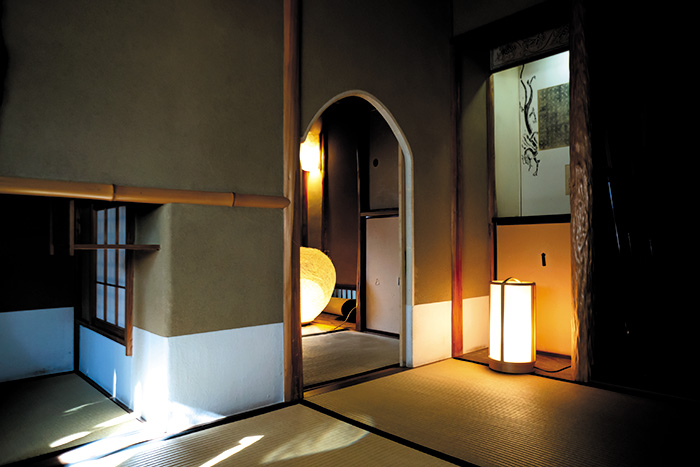
池上百竹亭 茶室
Ikegami Hyakuchikutei Tea House展示アーティストArtist
松本市丸の内10-31
10:00〜16:30
定休日なし
建築年 昭和33(1958)年
設計者 不明
施工者 不明
明治23(1890)年に呉服卸商の長男として生まれた池上喜作の邸宅として、昭和33(1958)年に建てられた。日本の伝統を伝える和室と茶室、露地や竹林が醸し出す閑静な庭園は、自らも文化人として活躍した喜作が多くの俳人や歌人と交流を深めた場所だった。庭園内にある明治百年記念の句碑や寿塔は、喜作が終生深く関わった俳人萩原井泉水のもので、毎年この邸宅を訪れていたという。
茶室は京都から茶室専門の大工を呼んで作らせた本格的なもので、茶室の障子張りも京都から建具の専門家を呼んで仕上げられた。これらの職人は、浅間温泉の旅館に寝泊まりして作業を行なったという。また、裏千家風の露地を作るため設計師を京都に送って学ばせ、さまざまな樹木を配し、四季の移ろいを感じさせる侘び寂びの空間を作り上げた。
平成7(1995)年に遺族から松本市に寄贈され、芸術文化の振興を図るための社会教育施設『池上百竹亭(ひゃくちくてい)』として翌年に開館した。
Ikegami Hyakuchikutei Tea House
Year of construction: 1958 (Showa 33)
Architect: Unknown
Builder: Unknown
The house was built in 1958 as the residence of Kisaku Ikegami, who was born in 1890 as the eldest son of a kimono wholesaler. The quiet garden, with its traditional Japanese rooms, tea ceremony room, open space and bamboo grove, was a place where Kisaku, who was active as a cultural figure himself, deepened his relationships with many haiku poets and poets. The monument to commemorate the 100th anniversary of the Meiji era (1868-1912) and the Jyutou pagoda in the garden belong to the haiku poet Sensui Hagiwaraï, with whom Kisaku was deeply involved throughout his life, and who visited the house every year.
The tea ceremony room was built by a carpenter specializing in tea ceremony rooms from Kyoto, and the shoji (sliding doors) in the tea ceremony room were made by a specialist in fittings from Kyoto. These craftsmen are said to have stayed at a ryokan (Japanese inn) in Asama Onsen to do the work. He also sent a designer to Kyoto to learn how to create a Urasenke style open-air space, and created a wabi-sabi space with a variety of trees to remind us of the changing seasons.
The house was donated to Matsumoto City by the bereaved family in 1995, and opened the following year as the Ikegami Hyakuchikutei, a social education facility for the promotion of art and culture.